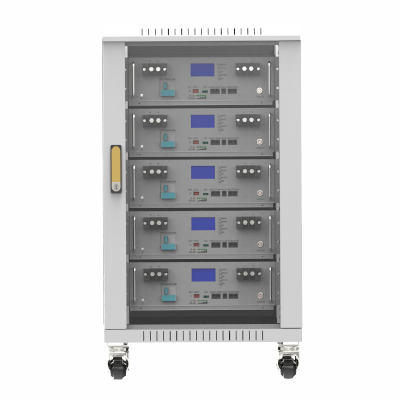Safeguarding Energy Solutions: Essential Safety Measures for Handling and Installing Stacks of Lithium Batteries
2024-02-28
In the era of renewable energy and innovative power solutions, lithium batteries have emerged as a cornerstone technology, offering high energy density and efficient energy storage. Stacking multiple lithium batteries to create larger energy storage systems has become a common practice, enabling scalability and flexibility for various applications. However, with the immense power potential of these battery stacks comes the need for stringent safety measures to mitigate risks and ensure safe operation. In this blog post, we'll explore the critical safety considerations when handling and installing a stack of lithium batteries.
Understanding the Risks
Lithium batteries, while highly efficient, can pose safety hazards if mishandled or improperly installed. Some common risks associated with lithium battery stacks include:
- Thermal Runaway: Overcharging, short circuits, or physical damage can trigger thermal runaway, leading to overheating, fires, or explosions.
- Chemical Leakage: Damage to battery cells can cause electrolyte leakage, exposing users to hazardous chemicals and corrosive substances.
- Electrical Hazards: High voltages present in battery stacks can pose electrocution risks if proper precautions are not taken during installation and maintenance.
Essential Safety Measures
1. Proper Handling and Transport: When moving lithium batteries, use appropriate handling equipment and ensure proper packaging to prevent physical damage or short circuits. Avoid dropping or mishandling batteries to minimize the risk of internal damage.
2. Installation by Trained Professionals: Installation of battery stacks should be carried out by qualified technicians familiar with the specific requirements of lithium battery systems. Follow manufacturer guidelines and specifications meticulously to ensure safe and reliable installation.
3. Electrical Isolation: Before installation, ensure that all power sources are disconnected, and proper electrical isolation measures are in place to prevent accidental shocks or short circuits.
4. Temperature Monitoring and Control: Implement robust thermal management systems to monitor and regulate battery temperatures effectively. Install temperature sensors and cooling mechanisms to prevent overheating and mitigate the risk of thermal runaway.
5. Ventilation and Airflow: Provide adequate ventilation in battery storage areas to dissipate heat and minimize the accumulation of flammable gases. Maintain clear airflow paths to facilitate efficient cooling of battery stacks.
6. Fire Suppression Systems: Install fire suppression equipment, such as extinguishers or automated fire suppression systems, in proximity to battery stacks to swiftly contain and extinguish fires in the event of thermal runaway or other emergencies.
7. Emergency Response Planning: Develop comprehensive emergency response plans outlining procedures for evacuations, fire containment, and emergency shutdowns in the event of battery-related incidents. Conduct regular drills to ensure all personnel are familiar with emergency protocols.
8. Training and Education: Provide comprehensive training to personnel involved in handling, installing, and maintaining lithium battery stacks. Ensure they are well-versed in safety protocols, hazard identification, and emergency response procedures.
9. Regular Inspections and Maintenance: Establish a routine inspection schedule to assess the condition of battery stacks, identify potential risks, and address any maintenance needs promptly. Inspect electrical connections, insulation, and cooling systems regularly to prevent failures and ensure optimal performance.
10. Compliance with Regulations and Standards: Adhere to relevant industry standards, regulations, and codes governing the installation and operation of lithium battery systems. Stay updated on emerging safety guidelines and best practices to maintain compliance and minimize safety risks.
Conclusion
Safety is paramount when handling and installing stacks of lithium batteries. By implementing rigorous safety measures, adhering to best practices, and staying informed about industry standards, stakeholders can mitigate risks and ensure the safe and reliable operation of lithium battery systems. With proper planning, training, and oversight, lithium battery stacks can continue to drive innovation in energy storage solutions while prioritizing the well-being of users and the environment.



